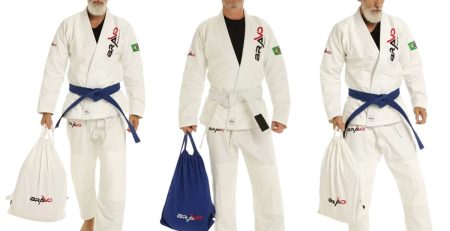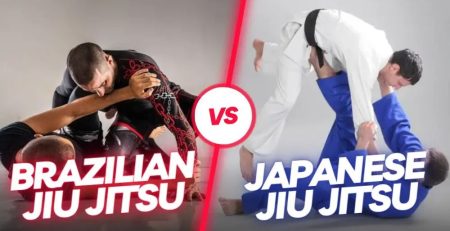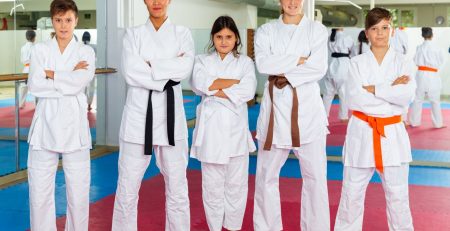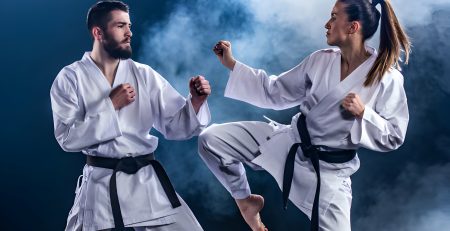Brazilian Jiu Jitsu Gi vs No Gi – Understanding the Key Differences
Table of Contents
- Introduction to Brazilian Jiu-Jitsu (BJJ)
- Understanding the Gi and No-Gi BJJ
- Key Differences Between Gi and No-Gi BJJ
- Advantages of Training with the Gi
- Disadvantages of Training with the Gi
- Advantages of Training No-Gi
- Disadvantages of Training No-Gi
- Training Techniques and Strategies in Gi BJJ
- Training Techniques and Strategies in No-Gi BJJ
- Impact of Gi and No-Gi Training on Competition
- Health and Conditioning Benefits of Both Styles
- Gi vs. No-Gi for Self-Defense
- Choosing the Right Style for Beginners
- The Future of Gi and No-Gi BJJ in MMA
- Conclusion: Gi, No-Gi, or Both?
Introduction to Brazilian Jiu-Jitsu (BJJ)
Brazilian Jiu-Jitsu (BJJ) is a martial art that focuses on grappling and ground fighting, and it has grown immensely in popularity worldwide. Originating in Brazil, BJJ emphasizes techniques that allow a smaller, weaker person to defeat a larger, stronger opponent by using leverage and submissions. This art form has become a cornerstone of mixed martial arts (MMA) and is renowned for its effectiveness in self-defense scenarios. Understanding the fundamental principles of BJJ is crucial to appreciating the unique distinctions between its two primary styles: Gi and No-Gi. As practitioners immerse themselves in BJJ, they often face the choice of specializing in one style over the other or balancing both to maximize their grappling proficiency.
Understanding the Gi and No-Gi BJJ
In Brazilian Jiu-Jitsu, the terms “Gi” and “No-Gi” refer to the type of clothing worn during training and competition. The Gi is a traditional uniform similar to the judogi used in Judo, comprising a heavy cotton jacket, pants, and a belt indicating the practitioner’s rank. Gi BJJ relies heavily on the use of grips on the clothing to control opponents and execute techniques such as chokes and joint locks. This style emphasizes precision, technique, and a methodical approach to grappling.
In contrast, No-Gi BJJ involves training without the traditional uniform. Instead, practitioners wear athletic apparel such as rash guards, shorts, and spats. The absence of the Gi removes the possibility of using clothing grips, leading to a faster-paced and more dynamic form of grappling. No-Gi BJJ focuses more on body positioning, speed, and agility, making it particularly relevant for self-defense and MMA scenarios where opponents do not wear uniforms. Looking to step up your game in no-gi jiu-jitsu? Bravo BJJ has you covered with our top-notch selection of no gi jiu jitsu attire at discounted prices.
Key Differences Between Gi and No-Gi BJJ
The most apparent difference between Gi and No-Gi BJJ is the attire. This distinction fundamentally alters the way techniques are executed and strategies are developed. In Gi BJJ, practitioners can use the fabric of their own or their opponent’s Gi to establish grips that facilitate control, submissions, and positional advancements. Techniques such as the collar choke, sleeve control, and lapel drags are unique to Gi BJJ due to the reliance on gripping the uniform. This grip dependency creates a slower, more deliberate pace in matches, where strategy and technique often outweigh sheer athleticism.
Conversely, No-Gi BJJ eliminates the ability to grab clothing, shifting the focus to underhooks, overhooks, wrist control, and clinching. The lack of fabric grips leads to a faster, more fluid style that relies heavily on speed, transitions, and athleticism. Techniques that are effective in No-Gi often involve body locks, leg entanglements, and wrestling-based maneuvers. The absence of grips also means that maintaining positional control can be more challenging, necessitating constant movement and adjustment. Not sure what to wear for no-gi BJJ? Check out our comprehensive guide on what to wear to jiu jitsu no gi to ensure you’re properly equipped for your training sessions.
Advantages of Training with the Gi
Training with the Gi offers several unique benefits that contribute to a well-rounded grappling game. One of the primary advantages is the development of grip strength and dexterity. The use of the Gi allows practitioners to establish a variety of grips, which can significantly enhance control over an opponent. This grip-centric approach promotes a detailed understanding of leverage and positioning, fostering technical precision.
Additionally, Gi training emphasizes the importance of patience and strategic thinking. The slower pace of Gi BJJ allows practitioners to carefully plan their moves and counter-moves, honing their ability to think several steps ahead. This methodical approach is particularly beneficial for beginners, as it provides a clear framework for learning and applying techniques. Moreover, many practitioners find the traditional aspect of Gi BJJ appealing, as it connects them to the historical roots and ceremonial elements of martial arts. Prefer the traditional gi training? Explore our range of high-quality BJJ gi options, also available at discounted prices.
Disadvantages of Training with the Gi
Despite its advantages, training with the Gi also has certain drawbacks. The reliance on grips can create a dependency that may not translate well to No-Gi scenarios or real-life self-defense situations where opponents are not wearing a uniform. This grip dependency can also slow down the pace of training and competition, which might not appeal to those who prefer a more dynamic and fast-paced grappling style.
Furthermore, the heavy cotton Gi can become cumbersome, particularly during intense training sessions or in hot climates. The fabric can retain sweat and restrict movement, making it uncomfortable for some practitioners. The traditional Gi is also more expensive and requires specific care and maintenance, including regular washing and occasional repair.
Advantages of Training No-Gi
Training No-Gi offers several compelling benefits that make it an attractive option for many BJJ practitioners. One of the most significant advantages is the development of agility and speed. Without the restrictive fabric of the Gi, practitioners must rely on quick movements and transitions to gain and maintain control. This focus on speed and fluidity can enhance overall athleticism and improve cardiovascular fitness.
No-Gi BJJ is also highly applicable to self-defense and MMA. In real-life scenarios, opponents are unlikely to be wearing a Gi, so the techniques learned in No-Gi are often more practical for self-defense. Additionally, No-Gi training emphasizes the importance of body control and positioning, skills that are directly transferable to MMA, where fighters do not wear traditional uniforms. Curious about the ins and outs of no-gi jiu-jitsu? Learn all about it with our article on what is no gi jiu jitsu.
Disadvantages of Training No-Gi
While No-Gi training has its benefits, it also comes with certain challenges. The lack of grips means that maintaining control over an opponent can be more difficult, especially as both fighters become slippery with sweat during intense matches. This can lead to a higher reliance on athleticism and physical conditioning, potentially disadvantaging smaller or less physically gifted practitioners.
Another disadvantage is the faster pace of No-Gi grappling, which can make it harder for beginners to keep up and learn the techniques effectively. The rapid transitions and constant movement require a high level of situational awareness and quick reflexes, which may be overwhelming for newcomers to BJJ. Additionally, No-Gi competitions often have more lenient rules regarding leg locks and other potentially dangerous techniques, increasing the risk of injury.
Training Techniques and Strategies in Gi BJJ
Gi BJJ offers a rich array of techniques and strategies that leverage the use of grips on the uniform. Key techniques include collar chokes, such as the cross-collar choke and the loop choke, which utilize the opponent’s Gi to apply pressure on the neck. Sleeve grips are used for control and to set up various sweeps and submissions, including the armbar and the triangle choke.
One of the strategic advantages of Gi BJJ is the ability to slow down the pace of a match and control the opponent through grips. This control allows for a more deliberate and methodical approach, where practitioners can carefully plan and execute their moves. Gi BJJ also emphasizes positional control, with techniques such as the guard pass and the mount being central to maintaining dominance.
Training Techniques and Strategies in No-Gi BJJ
No-Gi BJJ requires a different set of techniques and strategies that do not rely on clothing grips. Key techniques include body locks, underhooks, and overhooks, which are used to control the opponent and set up submissions. Common submissions in No-Gi include the rear naked choke, the guillotine choke, and leg locks such as the heel hook and the kneebar.
The fast pace of No-Gi BJJ necessitates constant movement and quick transitions. Practitioners must be adept at scrambling and using positional control to create openings for submissions. Wrestling techniques, such as takedowns and sprawls, are also highly emphasized in No-Gi training, as they are crucial for controlling the opponent and dictating the flow of the match.
Impact of Gi and No-Gi Training on Competition
The choice between Gi and No-Gi training can significantly impact a practitioner’s performance in competition. Gi competitions tend to be slower-paced and more strategic, with an emphasis on precision and control. The use of grips allows for a greater variety of techniques, and matches often involve careful planning and tactical maneuvering.
In contrast, No-Gi competitions are generally faster-paced and more dynamic. The lack of grips means that matches can change direction quickly, with rapid transitions and high levels of athleticism. No-Gi competitions often allow a broader range of techniques, including leg locks, which can add an element of unpredictability and excitement.
Health and Conditioning Benefits of Both Styles
Both Gi and No-Gi BJJ offer significant health and conditioning benefits, although the specific advantages may differ between the two styles. Gi training, with its emphasis on grip strength and controlled movements, can enhance muscular endurance and strength, particularly in the hands, forearms, and upper body. The slower pace of Gi training also allows for a focus on technique and precision, reducing the risk of injury.
No-Gi training, with its faster pace and emphasis on speed and agility, can improve cardiovascular fitness and overall athleticism. The constant movement and quick transitions provide an excellent workout for the entire body, enhancing strength, endurance, and flexibility. The focus on body control and positioning in No-Gi BJJ also helps to develop core strength and stability.
Gi vs. No-Gi for Self-Defense
When it comes to self-defense, both Gi and No-Gi BJJ offer valuable skills, but No-Gi may have the edge in real-world scenarios. In self-defense situations, opponents are unlikely to be wearing a Gi, making the techniques learned in No-Gi training more directly applicable. No-Gi BJJ emphasizes body control, positioning, and the use of underhooks and overhooks, which are practical and effective in real-life encounters.
That being said, Gi BJJ also provides important self-defense skills, particularly in terms of grip control and the use of clothing to establish dominance. Practitioners trained in Gi BJJ can use an opponent’s clothing to their advantage, applying chokes and submissions that are effective in self-defense situations. Looking to enhance your Brazilian jiu-jitsu skills? Dive into our articles on Brazilian jiu jitsu training and Brazilian jiu jitsu self-defense.
Choosing the Right Style for Beginners
For beginners, the choice between Gi and No-Gi BJJ can be influenced by several factors, including personal preferences, training goals, and the availability of classes. Gi BJJ is often recommended for beginners because the slower pace and structured techniques provide a clear framework for learning the fundamentals. The use of grips in Gi BJJ also helps beginners develop a strong understanding of leverage and control.
However, No-Gi BJJ is also a viable option for beginners, particularly those interested in MMA or self-defense. The faster pace and emphasis on body control and positioning can be challenging, but it provides a practical and dynamic introduction to grappling. Ultimately, the best approach for beginners may be to train in both styles, gaining the benefits of each and developing a well-rounded skill set.
The Future of Gi and No-Gi BJJ in MMA
As MMA continues to grow in popularity, the influence of both Gi and No-Gi BJJ on the sport is likely to increase. No-Gi BJJ, with its direct application to MMA, will continue to be a critical component of a fighter’s training regimen. The techniques and strategies learned in No-Gi BJJ are highly relevant to the fast-paced and dynamic nature of MMA, where fighters must be able to adapt quickly and effectively.
Gi BJJ will also remain important, particularly for its emphasis on technique, control, and the development of a strong foundational skill set. Many top MMA fighters have backgrounds in Gi BJJ, and the discipline and precision required in Gi training can enhance overall grappling proficiency. The future of BJJ in MMA will likely see a continued blending of both styles, with fighters incorporating the best elements of each to maximize their effectiveness in the cage. And if you’re interested in the best Brazilian jiu-jitsu fighters in MMA, we’ve got you covered with insights into the best Brazilian jiu jitsu fighter in MMA.
Conclusion: Gi, No-Gi, or Both?
The debate between Gi and No-Gi BJJ is ultimately a matter of personal preference and training goals. Each style offers unique benefits and challenges, and the best choice for any individual will depend on their specific objectives and interests. For those seeking a traditional, methodical approach with an emphasis on grip control and strategic planning, Gi BJJ is an excellent option. For those interested in a faster-paced, more dynamic style that is directly applicable to self-defense and MMA, No-Gi BJJ may be more appealing.
Ultimately, the best approach may be to train in both styles, gaining the benefits of each and developing a comprehensive and versatile skill set. Whether you choose Gi, No-Gi, or both, Brazilian Jiu-Jitsu offers a rewarding and challenging journey that can enhance physical fitness, mental discipline, and self-defense capabilities.
FAQ: Gi vs. No-Gi BJJ
Q1. What is the main difference between Gi and No-Gi BJJ?
A: The primary difference between Gi and No-Gi BJJ is the attire. In Gi BJJ, practitioners wear a traditional uniform consisting of a heavy cotton jacket, pants, and a belt, which allows for grips on the fabric. In No-Gi BJJ, practitioners wear athletic clothing like rash guards and shorts, eliminating the use of fabric grips and leading to a faster-paced style of grappling.
Q2. Which style is better for beginners?
A: Both styles have their benefits for beginners. Gi BJJ offers a structured, slower-paced learning environment with an emphasis on grips and detailed techniques. No-Gi BJJ, while faster-paced and more dynamic, can be directly applicable to self-defense and MMA. Many recommend starting with Gi BJJ to build a strong technical foundation, but training in both can provide a well-rounded skill set.
Q3. Can I compete in both Gi and No-Gi BJJ competitions?
A: Yes, many practitioners compete in both Gi and No-Gi BJJ competitions. Training in both styles can enhance your overall grappling ability and prepare you for a wider range of scenarios. Each style has its own set of rules and techniques, so competing in both can broaden your experience and adaptability.
Q4. What are the advantages of training with the Gi?
A: Training with the Gi helps develop grip strength, precision, and strategic thinking. The use of grips allows for a slower, more deliberate pace, which can be beneficial for learning and applying techniques. Gi BJJ also connects practitioners to the traditional roots of the martial art.
Q5. What are the advantages of training No-Gi?
A: No-Gi training enhances speed, agility, and overall athleticism. It focuses on body control, positioning, and quick transitions, which are highly relevant for self-defense and MMA. The absence of grips can lead to a faster-paced and more dynamic grappling style.
Q6. Are there specific techniques unique to Gi or No-Gi BJJ?
A: Yes, certain techniques are unique to each style. Gi BJJ includes techniques that rely on fabric grips, such as collar chokes and sleeve control. No-Gi BJJ emphasizes techniques that do not require grips, such as body locks, underhooks, overhooks, and various leg locks.
Q7. How does training in each style impact self-defense?
A: No-Gi BJJ is often considered more applicable to self-defense because it simulates real-life scenarios where opponents are not wearing a uniform. Techniques learned in No-Gi are practical and directly transferable to self-defense situations. Gi BJJ also provides valuable self-defense skills, particularly in using an opponent’s clothing to establish control and apply submissions.
Q8. Is Gi BJJ more traditional than No-Gi BJJ?
A: Yes, Gi BJJ is more traditional, reflecting the historical roots of Brazilian Jiu-Jitsu and its connections to Judo. The use of the Gi and the emphasis on ceremonial aspects, such as belt ranks and etiquette, are integral parts of the traditional training experience.
Q9. How does the pace of training differ between Gi and No-Gi BJJ?
A: Gi BJJ tends to be slower-paced, with a focus on methodical techniques and strategic planning. No-Gi BJJ is generally faster-paced, emphasizing quick transitions, agility, and constant movement. This difference in pace can affect training dynamics and the overall approach to grappling.
Q10. Which style is better for MMA?
A: No-Gi BJJ is often considered more relevant for MMA because it closely resembles the conditions of an MMA fight, where fighters do not wear uniforms. The techniques and strategies used in No-Gi BJJ, such as body control and quick transitions, are directly applicable to MMA. However, Gi BJJ also provides a strong technical foundation and improves overall grappling skills.
Q11. What health and conditioning benefits do both styles offer?
A: Both Gi and No-Gi BJJ offer significant health and conditioning benefits. Gi training enhances grip strength, muscular endurance, and technical precision. No-Gi training improves cardiovascular fitness, overall athleticism, and agility. Both styles contribute to overall physical fitness, flexibility, and mental discipline.
Q12. Can I switch between Gi and No-Gi training?
A: Yes, many practitioners switch between Gi and No-Gi training to develop a versatile skill set. Training in both styles can enhance your adaptability and prepare you for various grappling scenarios. Switching between styles can also keep your training routine fresh and engaging.
Q13. Are there specific competitions for Gi and No-Gi BJJ?
A: Yes, there are specific competitions for both Gi and No-Gi BJJ, each with its own set of rules and regulations. Gi competitions focus on techniques involving fabric grips, while No-Gi competitions emphasize body control and athleticism. Many BJJ organizations host events that include both Gi and No-Gi divisions.
Q14. How does Gi BJJ connect to the traditional roots of martial arts?
A: Gi BJJ retains many traditional elements of martial arts, including the use of a uniform, belt ranks, and formal etiquette. This connection to tradition fosters a sense of respect, discipline, and continuity with the historical roots of Brazilian Jiu-Jitsu and its predecessor, Judo.
Q15. What should I consider when choosing between Gi and No-Gi BJJ?
A: When choosing between Gi and No-Gi BJJ, consider your training goals, personal preferences, and the availability of classes. Think about whether you prefer a slower, more strategic approach (Gi) or a faster, more dynamic style (No-Gi). If possible, try both styles to see which one resonates with you and aligns with your objectives. Training in both can provide a comprehensive and rewarding grappling experience.














Leave a Reply
You must be logged in to post a comment.